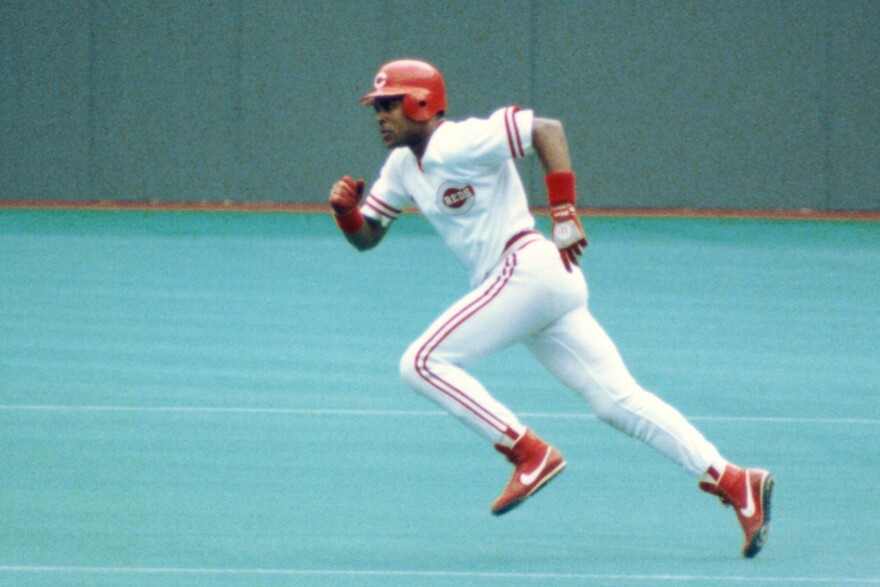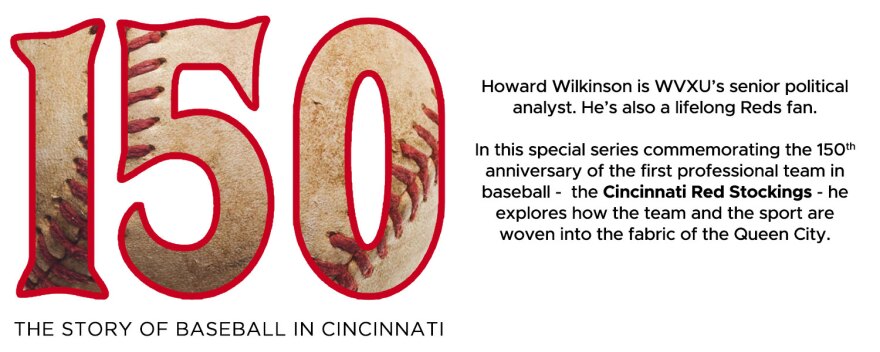Sometimes, as I sit in my mezzanine seats at Great American Ball Park, I hear fans sitting nearby – casual fans, folks who do not, like some of us, live and breathe Reds baseball all year long – talking about the circular plaques on the façade behind home plate, just below the press box and broadcast booths.
They wonder out loud about what those red numbers in those circles represent. On the face of it, they have no rhyme nor reason.
This is when I will often butt into their conversations and explain what is going on.
Most Reds fans know this, as do visitors from other parts of the country, whose ball parks back home have their own set of numbers on display.
They are retired numbers – numbers which belonged to players so great, so memorable, that the Cincinnati Reds have decided that no future player will ever wear that number again.
To the major league baseball player, it is an honor exceeded only by election to the National Baseball Hall of Fame in Cooperstown, where their bronze plaques will hang in that shrine forever as a reminder of the greatest of the great.
Having your number retired is an honor accorded to an elite few.
The Cincinnati Reds have 10 numbers hanging on the façade behind home plate. Six of them belong to players (and one manager) who also have plaques at Cooperstown.
And one, 42, in blue numbers, is retired throughout baseball – the number that belonged to Jackie Robinson, who became the first black to break baseball's color line in 1947.
It wasn't until the late 1930s that all of the teams in major league baseball wore numbers on their backs.
That means that there were legendary players who have plaques in the Hall of Fame who can't have a retired number. They had no number to begin with. They include Hall of Famers like Bid McPhee, the incredibly talented second baseman of the 1880s and 1890s, and Edd Roush, the star player on the 1919 World Series championship team.
In 1939, Reds general manager Warren Giles set a standard for uniform numbers that lasted for decades but is now more or less ignored.
Giles set up a system where pitchers would wear numbers between 30 and 49, outfielders would wear 20 to 29, infielders 10-19 and catchers, coaches and managers would wear single digit numbers.
The Reds' 10 retired numbers follow that standard for the most part.
So who are these 10 Reds whose numbers are on the wall?
Chances are you have heard of most of them, even if you don't follow baseball or know much about them.
1 – The number which belonged to Fred Hutchinson, retired in 1965, after the Reds manager died of cancer in Nov. 1964 at the age of 45. He was the manager who ended the Reds 21-year drought by dragging a young, underdog team to a National League pennant in 1961. The upstart Reds lost the World Series to an incredibly talented New York Yankees team in five games. Hutch's legacy lives on with the Fred Hutchinson Cancer Research Center in Seattle.
5 – It was the number worn by Johnny Bench, the catcher from Binger, Okla. Most will tell you he was the greatest catcher in major league history. He played his entire 17-year career with the Reds and compiled some astounding achievements – two National League MVP awards, 10 National League Gold Glove Awards for his defensive skills, and a 14-time National League All Star. Bench, a leader on the Big Red Machine teams of the 1970s, was inducted into Cooperstown in 1989, his first year of eligibility.

8 – Joe Morgan. Without question, the greatest second baseman in Reds history. He came here in 1972 in a blockbuster trade with the Houston Astros. And he turned out to be the final piece needed to create the juggernaut known as The Big Red Machine. Morgan won the National League MVP in 1975 and 1976 – both years in which the Reds were World Series champions. Morgan was a 10-time All Star and five time Gold Glove winner.
10 – Sparky Anderson. "The Main Spark." Or as he was better known to Reds fans when he was hired to manage the club in 1970, "Sparky who?" He will go down in baseball history as the first manager to win World Series championships in both leagues – 1975 and 1976 with the Reds and 1984 with the Detroit Tigers. There's no question that the late Sparky Anderson was the most beloved manager in the Reds' long history.
11 – This number belongs to a local kid – Barry Larkin of Silverton and Moeller High School. He retired in 2004 after 19 seasons, all with the Reds. And he was voted into Cooperstown in 2012. Larkin and his friend Eric Davis were the leaders of the 1990 "Wire to Wire" World Champion Reds. Five years later, he earned the National League MVP award. A 12-time All Star, nine-time Silver Slugger Award winner, and three-time Gold Glove recipient, he became, in 1996, the first shortstop in big league history to have a 30 home run, 30 stolen base season.

13 – David Concepcion. For 19 seasons before Larkin arrived on the scene, the Venezuelan was the Reds' shortstop, and there are many who believe he deserves a place in Cooperstown alongside Larkin. Concepcion was a nine-time NL All Star and five-time NL Gold Glove winner.
14 – On June 26, 2016, Pete Rose's number 14 joined the other retired numbers – but only with special permission from the baseball commissioner's office. He was banned from baseball for gambling in 1989, while he was managing the club. But he is the all-time hit leader in baseball, with 4,256 base hits over a 24-year playing career. Rose was the 1973 NL MVP, a three-time batting champion and one of the undisputed leaders of the Big Red Machine of the 1970s.

18 – Big Klu. Indiana native Ted Kluszewski was famous for wearing cut-off jerseys, showing his massive biceps off to opposing pitchers, who usually got the message – this man was strong as an ox. The Reds' dominant slugger of the 1950s, Klu was a four-time All Star. His 1954 season was incredible – a .326 batting average, 49 home runs and 141 RBI.
20 – Frank Robinson. Some would say he was the greatest Red of them all. Robby died in February at the age of 83. In his 10 years with the Reds, he won the Rookie of the Year award and was the NL MVP in 1961. Older Reds fans still cringe over what they consider the worst trade in Reds history, when, after the 1965 season, the Reds sent Robinson to the Orioles in exchange for pitchers Milt Pappas and Jack Baldschun and outfielder Dick Simpson. All Robby did in his first year with Baltimore was win the American League MVP and the Triple Crown – leading the league in homes runs, batting average and runs batted in.

24 – The Big Dog. Tony Perez. The Cuban-born slugger became one of the most beloved players in Reds history and a key component of the Big Red Machine. A seven-time All Star, he hit 379 home runs over his 23-year career and retired with the second-most RBIs among players from Latin America: 1,652. He was inducted into Cooperstown in 2000.
Those are the 10 immortals. If you can think of other Reds you believe deserve the honor of a retired number, leave a message on this story.




